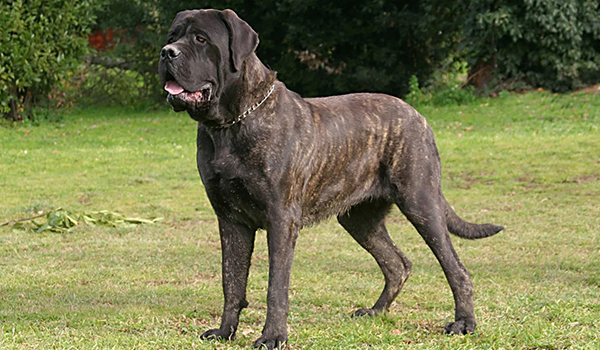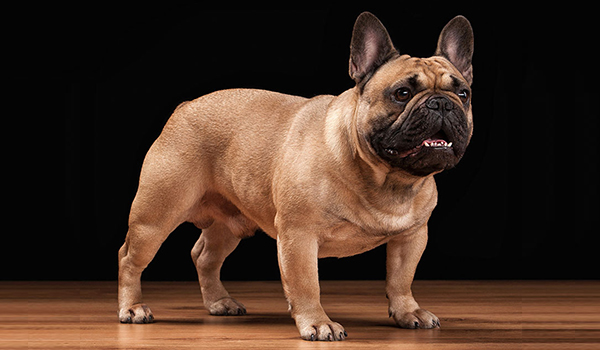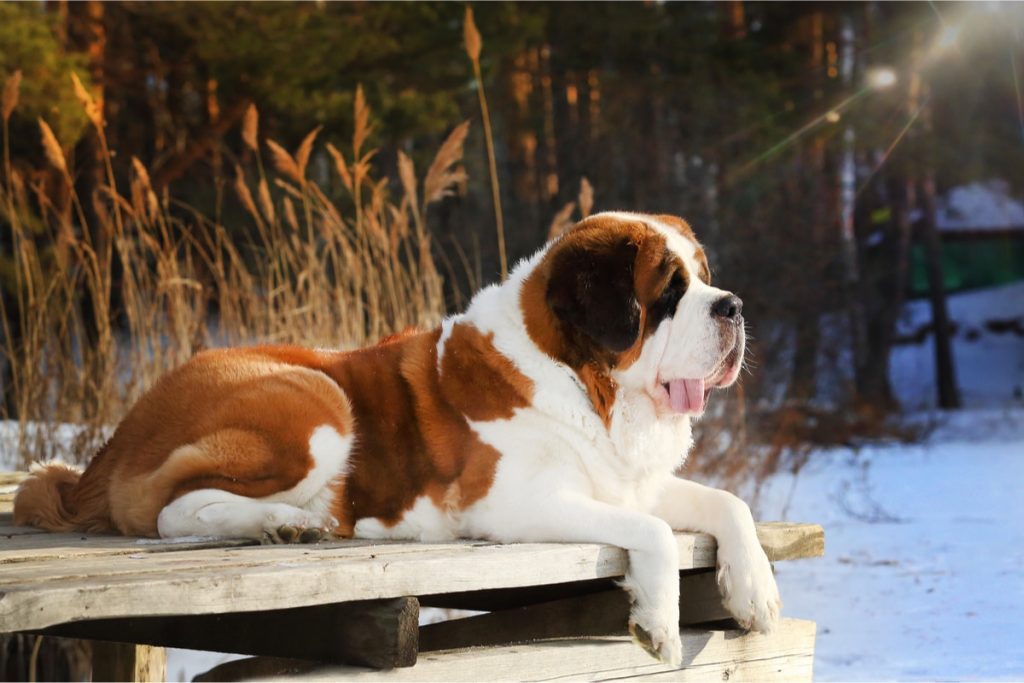
The Saint Bernard is the epitome of a gentle giant. A breed of immense size, strength, and legendary heroism, they are known worldwide as the gentle rescuers of the Swiss Alps. With their massive head, expressive eyes, and calm, patient demeanor, they are the quintessential “nanny dog” and a symbol of unwavering loyalty. However, their grand stature comes with equally grand responsibilities in terms of care, space, and cost.
This comprehensive guide will explore the reality of life with a Saint Bernard to help you determine if you can provide the home this magnificent and loving breed requires to thrive.
Breed Overview
- Group: Working
- Height: 26 – 30 inches (at the shoulder)
- Weight: 120 – 180 pounds (some males can be larger)
- Life Span: 8 – 10 years
- Coat: Two varieties:
- Short-haired (Smooth): Dense, smooth, and close-fitting.
- Long-haired (Rough): Medium length, slightly wavy.
- Colors: Typically white with markings in red, mahogany, brindle, or orange; or a mantle of those colors over the body.
A Brief History: The Alpine Rescue Legend
The Saint Bernard’s history began around 1050 A.D. at the Great St. Bernard Pass hospice in the Swiss Alps, founded by monk Bernard of Menthon. The monks used these large farm dogs for guarding and companionship. They soon discovered the dogs’ incredible ability to locate and rescue travelers lost in the treacherous, snowy mountain passes.
Their legendary rescue work, often depicted with a small brandy cask around their neck, was real. Their keen sense of smell, strength to break through snow, and thick coat provided life-saving warmth to stranded victims. The most famous Saint Bernard, “Barry,” was credited with saving over 40 lives in the early 1800s. Their heroism cemented their reputation as gentle, courageous, and intelligent saviors.
The Saint Bernard Temperament: A Gentle and Patient Soul
The Saint Bernard’s temperament is its greatest treasure. They are the definition of a calm, friendly, and patient family companion.
- Gentle & Patient: Despite their intimidating size, Saints are famously gentle, kind, and incredibly patient, especially with children. They are often called “nanny dogs” for their tolerant and watchful nature.
- Friendly & Good-Natured: They are typically friendly with everyone, including strangers and other animals. They are not guard dogs in an aggressive sense, but their size alone is a deterrent.
- Intelligent & Willing to Please: They are intelligent and generally eager to please their families, making them relatively trainable for their size, though they can have a stubborn streak.
- Calm & Low-Energy Indoors: They are surprisingly calm and low-energy inside the home, often content to be a “rug dog.” They are not hyperactive or destructive when their needs are met.
- People-Oriented: They form deep bonds with their families and thrive on companionship. They do not do well when isolated or left alone for long periods.
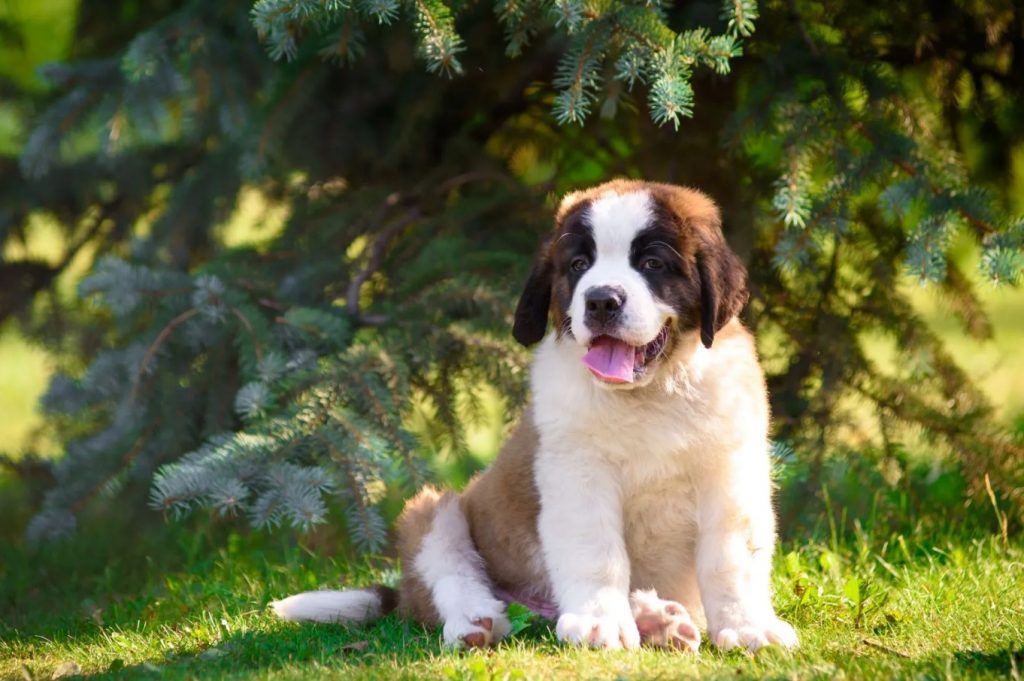
Caring for Your Saint Bernard
Exercise: Moderate Needs for a Giant Breed
While they are not endurance athletes, they require regular, moderate exercise to stay healthy and prevent obesity.
- Daily Requirements: 30-45 minutes of daily activity is sufficient. This should include leisurely walks and gentle play.
- Avoid Overexertion & Heat: Their large size makes them prone to joint problems, and their heavy coat makes them highly susceptible to heatstroke. Exercise should be limited to cool parts of the day, and they must always have access to a cool, air-conditioned environment.
- Puppy Considerations: Exercise for puppies must be strictly controlled to protect their rapidly developing joints and bones.
Grooming: A Commitment to the Coat
Their coat, whether short or long, requires regular maintenance.
- Brushing: Brush 2-3 times a week with an undercoat rake and a slicker brush to manage shedding and prevent mats. During their biannual “coat blow,” daily brushing is a necessity.
- Shedding & Drool: Be prepared for prolific shedding and copious amounts of drool, especially after drinking or eating. Keeping a “drool rag” handy is a fact of life for a Saint owner.
- Bathing: Bathing a Saint Bernard is a major project and should be done as needed, often with professional help.
- Facial Wrinkles: The skin folds on their face must be cleaned and dried daily to prevent infection and odor.
Training: Essential for a Manageable Giant
Training is not optional with a Saint Bernard; it is a matter of safety and practicality.
- Start Early: Begin socialization and puppy training classes as soon as possible. A out-of-control 10-pound puppy is cute; an out-of-control 150-pound adult is dangerous.
- Focus on Manners: Essential skills include:
- Leash Manners: Teaching them not to pull is paramount.
- Not Jumping Up: A jumping puppy is one thing; a jumping adult Saint can knock over an adult.
- Basic Obedience: Reliable “sit,” “stay,” and “down” commands are crucial.
- Use Positive Reinforcement: They are sensitive souls who respond best to reward-based training with praise and treats. Harsh methods are ineffective.
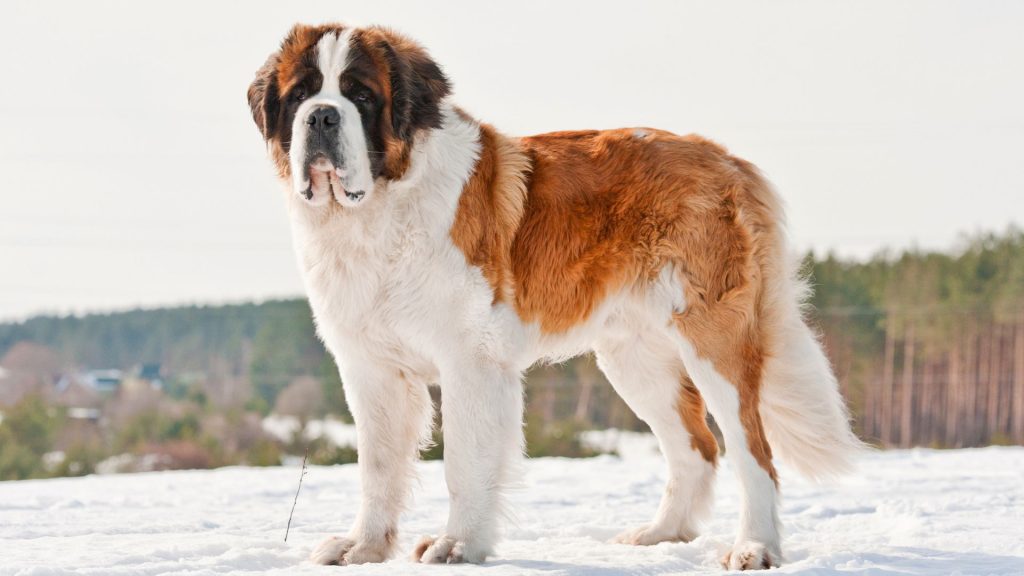
Health: What to Be Aware Of
Tragically, the Saint Bernard’s majestic size comes with a shorter lifespan and predisposition to serious health issues.
- Hip and Elbow Dysplasia: This is a very common and serious concern. Their heavy weight puts immense strain on their joints. Reputable breeders will provide OFA or PennHIP certifications.
- Bloat (Gastric Dilatation-Volvulus): This is the number one killer of large, deep-chested breeds like the Saint Bernard. It is a life-threatening emergency. Preventative measures are non-negotiable:
- Feed 2-3 small meals a day instead of one large one.
- Avoid exercise for at least one hour before and two hours after eating.
- Use a slow-feed bowl.
- Know the signs and have an emergency plan.
- Heart Conditions: Such as Dilated Cardiomyopathy (DCM).
- Eye Conditions: Including entropion and ectropion.
Is a Saint Bernard Right For You?
A Saint Bernard might be your perfect match if you:
- Have a very large, spacious home with room for a massive dog bed and easy outdoor access.
- Want a gentle, calm, and patient family dog.
- Live in a cool or cold climate or have a consistently air-conditioned home.
- Are prepared for the significant financial commitment of feeding and providing veterinary care for a giant breed.
- Don’t mind copious amounts of drool and dog hair.
You should absolutely reconsider if you:
- Live in a small apartment or a home with many stairs.
- Live in a hot or humid climate.
- Are on a tight budget (food, medication, and vet bills are substantial).
- Want a long-lived breed (their lifespan is heartbreakingly short).
- Are unprepared for the emotional and financial toll of potential health issues like bloat and joint dysplasia.

Finding Your Saint Bernard
- Reputable Breeders: This is paramount. A responsible breeder will:
- Health Test: Provide OFA/PennHIP certifications for hips and elbows and cardiac clearances.
- Be Transparent: Discuss their strategies for preventing bloat and be honest about the breed’s health challenges and lifespan.
- Focus on Temperament: Breed for the stable, gentle temperament the breed is known for.
- Rescue & Shelters: Saint Bernard-specific rescues are very active. Many dogs are surrendered due to their size, cost, or shorter lifespan. Adopting an adult can be a wonderful way to offer a second chance.
Understanding the Cost: The initial purchase price from a reputable breeder in the U.S is typically $1,500 to $3,000+. The lifetime cost of ownership is the real consideration. Owners must budget for:
- Massive amounts of high-quality food.
- Giant-sized everything: crates, beds, food/water bowls.
- Substantial veterinary bills, including higher costs for anesthesia, medications, and potential emergencies like bloat surgery. Pet insurance is highly recommended.
Bringing a Saint Bernard into your life is a commitment to a larger-than-life companion. In return for your dedicated care, you will gain the most gentle, loyal, and heartwarming friend whose majestic presence and unwavering devotion will leave an indelible mark on your life, however short their time may be.



